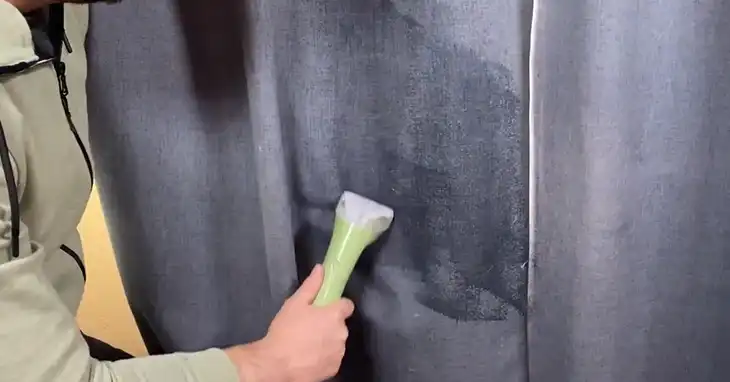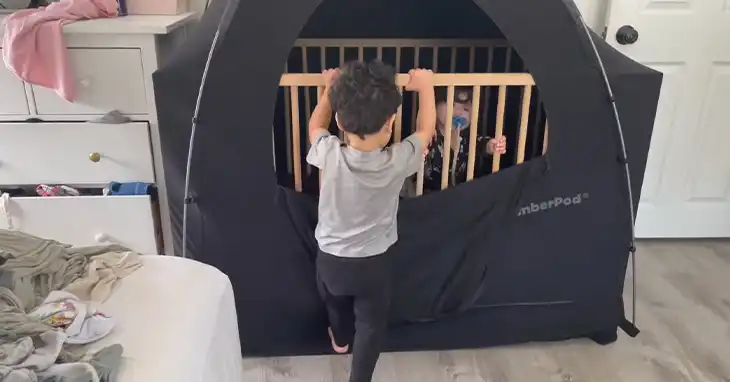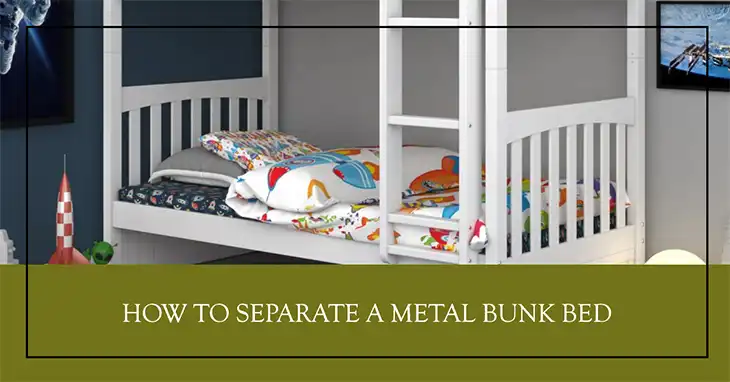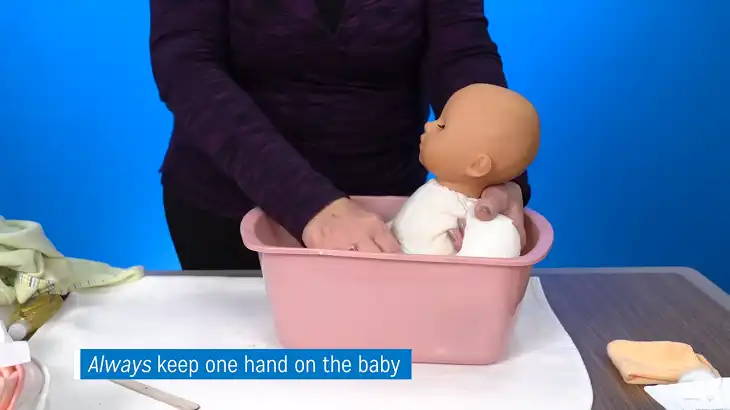How Thick Should a Bassinet Mattress Be?
The thickness of the bassinet mattress plays a crucial role in ensuring your baby’s safety and comfort during sleep. The ideal thickness for a bassinet mattress is between 1 to 1.5 inches. This range provides the perfect balance of support and safety for your little one.
Below, we’ll discuss why proper mattress thickness is necessary and more importantly how to choose the mattress with the right thickness for your baby. Later on in the article, we’ll also explain essential safety considerations for your baby’s sleep environment. Let’s begin.
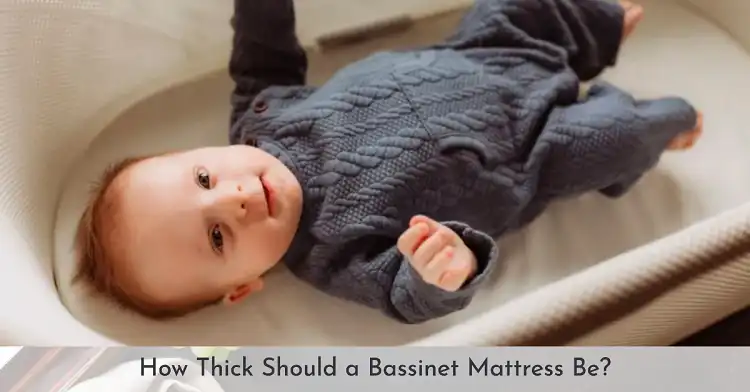
Why Bassinet Mattress Thickness Is Important
The thickness of a bassinet mattress isn’t just about comfort, it’s a critical safety factor. The American Academy of Pediatrics (AAP) strongly recommends a firm sleep surface to reduce the risk of Sudden Infant Death Syndrome (SIDS). A mattress that’s too thick or soft can create pockets where a baby’s face might sink in, potentially leading to suffocation.
The Risks of Thick Mattresses
Mattresses thicker than 1.5 inches may seem more comfortable to adults, but they pose significant dangers to infants. Here’s why:
- Plush surfaces can conform to a baby’s face, obstructing breathing.
- Thicker mattresses can make it harder for babies to shift positions safely.
- Excessive padding can trap heat, leading to an unsafe sleep temperature.
What’s the Ideal Bassinet Mattress Thickness
The recommended thickness of 1 to 1.5 inches isn’t arbitrary. This range has been determined through extensive research and real-world safety data. Let’s break down why this thickness works:
- Firmness: A thin mattress is naturally firmer, providing the necessary support for your baby’s developing spine and reducing the risk of suffocation.
- Heat regulation: Thinner mattresses allow for better air circulation, helping maintain a safe body temperature for your baby.
- Safety standards compliance: Most bassinets are designed to safely accommodate mattresses within this thickness range.

How to Choose the Right Bassinet Mattress
When shopping for a bassinet mattress, keep these factors in mind:
Size and Fit
A proper fit is crucial for safety. The mattress should fit snugly within the bassinet frame with no more than a two-finger width gap between the mattress and the bassinet sides. Standard bassinet mattress sizes typically range from 30-33 inches in length and 15-18 inches in width, but always check your specific bassinet’s requirements.
Material and Breathability
Look for mattresses made from breathable materials. Many modern bassinet mattresses feature mesh sides or breathable fabric covers to promote air circulation. This can help regulate temperature and reduce the risk of overheating.
Firmness Test
To check if a mattress is firm enough, press your hand into the center and edges. It should snap back quickly and not conform to the shape of your hand.
Waterproof Properties
A waterproof cover or waterproof inner layer can protect the mattress from accidents and make cleaning easier. However, ensure that any waterproof layer doesn’t compromise breathability.
Bassinet Mattress Vs Crib Mattress
As your baby grows, you’ll need to transition from a bassinet to a crib. Here’s a quick comparison:
| Feature | Bassinet Mattress | Crib Mattress |
| Thickness | 1-1.5 inches | 3-6 inches |
| Size | Varies (typically smaller) | Standard sizes available |
| Weight Limit | Usually up to 15-20 lbs | Up to toddler age |
| Portability | More portable | Less portable |
Remember, never use a crib mattress in a bassinet, as it will be too thick and won’t fit properly.
Frequently Asked Questions
Is a 2-inch bassinet mattress safe?
No, a 2-inch bassinet mattress is generally considered too thick. Stick to mattresses between 1 to 1.5 inches thick for optimal safety. Anything thicker can increase the risk of suffocation.
How soft should a bassinet mattress be?
A bassinet mattress should be firm, not soft. It might feel uncomfortably hard to adults, but firm surfaces are safest for infants. When you press on the mattress, it should quickly regain its shape without conforming to your hand.
How deep should a bassinet be?
A safe bassinet should be at least 7.5 inches deep from the top of the mattress to the top of the bassinet side. This depth helps prevent the baby from falling out as they start to move more.
How to measure a bassinet mattress?
To measure a bassinet mattress, measure the length and width of the bassinet’s interior. Then measure the thickness of the current mattress. Ensure any new mattress fits snugly with no more than a two-finger width gap on any side.
At what age is a baby too big for a bassinet?
Most babies outgrow their bassinet around 3-4 months of age or when they reach 15-20 pounds, whichever comes first. However, you should transition your baby out of the bassinet as soon as they show signs of rolling over or pushing up on their hands and knees.
Should a bassinet be flat?
Yes, a bassinet should be completely flat. Inclined sleep surfaces can lead to suffocation risks and are not recommended by pediatric safety experts.
How tight should bassinet sheets be?
Bassinet sheets should fit tightly and securely over the mattress. They should not come loose at the corners or edges when tugged. Loose sheets can pose a suffocation hazard.
Final Words
Choosing the right bassinet mattress thickness is a crucial step in creating a safe sleep environment for your baby. Remember, a firm, thin mattress between 1 to 1.5 inches thick is ideal. This thickness provides the necessary support while minimizing suffocation risks.
By understanding the importance of mattress thickness and implementing safe sleep practices, you’re giving your baby the best chance for safe, restful sleep. Always consult with your pediatrician if you have concerns, and remember that a firm sleep surface is a cornerstone of infant sleep safety.

